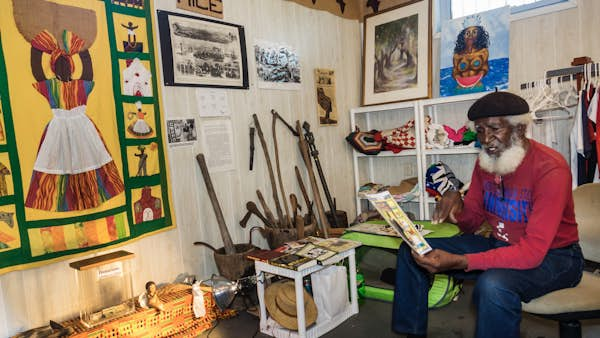I remember my amazement when I first learned that the famous song “Kumbaya” – a spiritual known by every kid who’s ever gone to summer camp – is in fact a Gullah Geechee tune. What the layperson hears as three soothing syllables in fact means “come by here” to the Gullah Geechee community.
This is how Gullah culture has operated for hundreds of years in the USA. Its influence on Southern and greater American culture has always been there, even if its roots haven’t been fully known or acknowledged. Order a heaping plate of shrimp and grits or a hoppin’ John for a taste of Gullah culinary ways. Watch high school and college groups perform step routines, and you’ll see similarities to hamboning, a traditional Gullah rhythm-and-movement technique.
So just who are the Gullah Geechee people? Like many, they are African Americans descended from people enslaved in the US. What distinguishes them is where their ancestors were enslaved: on and near the barrier islands that stretch from Wilmington, North Carolina down the coastline to Jacksonville, Florida. These communities were more isolated than those of Black Americans elsewhere in the country, which allowed the Gullah Geechee to preserve more of their African heritage. Their creole language, called Gullah (or sometimes Geechee, a Gullah dialect), uses a mix of words from English and several African languages. As we see with “Kumbaya,” most Americans know at least one or two Gullah words.
Today, most Gullah and Geechee folks (the latter usually refers to communities closer to the Ogeechee River near Savannah) live in communities that hug the coasts of South Carolina and Georgia, although their descendants can be found across the country. Following the string of barrier islands along the seaboard will bring the Gullah Geechee front and center.
From north to south, here are some of the best places to go to get immersed in their culture.
1. Reaves Chapel, Navassa, North Carolina
Reaves Chapel AME Church is one of the oldest structures built for African Americans in North Carolina. Efforts are underway to help preserve the building, and make it a stop on a more in-depth Gullah Geechee tour of coastal North Carolina. Visitors can’t go inside, but can visit the community of Reaves, historically a Gullah Geechee one.
2. Poplar Grove Plantation, Wilmington, North Carolina
This former sweet potato–and–peanut plantation is now listed on the National Register of Historic Places, and is a…
Click Here to Read the Full Original Article at Stories – Lonely Planet…
